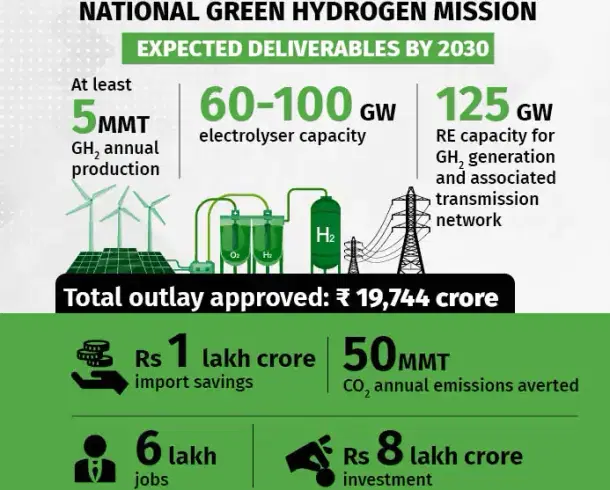Infrastructure
Budget 2023: Driving Green Transition With Rs 19,700 Crore Green Hydrogen Mission
V Bhagya Subhashini
Feb 01, 2023, 02:11 PM | Updated 05:16 PM IST
Save & read from anywhere!
Bookmark stories for easy access on any device or the Swarajya app.


- Green hydrogen — is referred to as “clean hydrogen” — is produced by using clean energy from surplus renewable energy sources.
- The government's objective is to achieve five MMT (million metric tonne) of annual production by 2030.
The recently launched National Green Hydrogen Mission, with a budget of Rs 19,700 crore, will help the country shift to a low-carbon economy and reduce reliance on fossil fuel imports.
The mission will facilitate demand creation, production, utilisation and export of green hydrogen. It is estimated to attract over Rs 8 lakh crore investments and create 6 lakh jobs by 2030.
The government's objective is to achieve five MMT (million metric tonne) of annual production by 2030.
It will lead to a cumulative reduction in fossil fuel imports by over Rs 1 lakh crore and an abatement of nearly 50 MT of annual greenhouse gas emissions.

The initial outlay for the mission will be Rs 19,744 crore, including an outlay of Rs 17,490 crore for the SIGHT (Strategic Interventions for Green Hydrogen Transition) programme, Rs 1,466 crore for pilot projects, Rs 400 crore for research and development (R&D), and Rs 388 crore towards other mission components.
Green Hydrogen — A Fuel For The Future?
Hydrogen is the simplest and most abundant element in the universe. On Earth, though, it rarely exists as a gas — so it needs to be separated from other elements.
Hydrogen can be produced from a range of resources including fossil fuels, nuclear energy, biomass and renewable energy sources. This can be done by a number of processes.
The resulting gas can be burned or used as a carrier to provide energy. And, if generated using renewables, it can be a clean alternative to burning fossil fuels.

There are various categories of hydrogen depending on the nature of the method of its extraction, namely, grey, blue, turquoise and green.

Green hydrogen — is referred to as “clean hydrogen” — is produced by using clean energy from surplus renewable energy sources, such as solar or wind power, to split water into two hydrogen atoms and one oxygen atom through a process called electrolysis.
It currently makes up about 0.1 per cent of overall hydrogen production, but this is expected to rise as the cost of renewable energy continues to fall.

Analysts believe transitioning to Green Hydrogen and Green Ammonia will make India a net exporter of fuel from the current status of leading importer of fuel which in turn brings India one step closer towards its 'panchamrit' goals at COP26 to fight climate change.
V Bhagya Subhashini is a staff writer at Swarajya. She tracks infrastructure developments.





